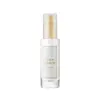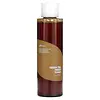What's inside
What's inside
 Key Ingredients
Key Ingredients

 Benefits
Benefits

 Ingredients Side-by-side
Ingredients Side-by-side

Aspergillus/Rice Germ Ferment Extract Filtrate 73%
EmollientPropanediol
SolventGlycerin
HumectantMethylpropanediol
SolventCyclopentasiloxane
EmollientNiacinamide
SmoothingCaprylyl Methicone
Skin ConditioningWater
Skin ConditioningCyclohexasiloxane
Emollient1,2-Hexanediol
Skin ConditioningSqualane
EmollientBetaine
HumectantC12-14 Pareth-12
EmulsifyingAmmonium Acryloyldimethyltaurate/Vp Copolymer
Panthenol
Skin ConditioningC30-45 Alkyl Cetearyl Dimethicone Crosspolymer
EmollientEthylhexylglycerin
Skin ConditioningAllantoin
Skin ConditioningXanthan Gum
EmulsifyingDipotassium Glycyrrhizate
HumectantAdenosine
Skin ConditioningDisodium EDTA
Pentylene Glycol
Skin ConditioningHydrolyzed Hyaluronic Acid
HumectantAlpha-Glucan Oligosaccharide
CleansingSodium Hyaluronate
HumectantMadecassoside
AntioxidantPortulaca Oleracea Extract
Skin ConditioningHydroxypropyl Cyclodextrin
MaskingGlutathione
Aspergillus/Rice Germ Ferment Extract Filtrate 73%, Propanediol, Glycerin, Methylpropanediol, Cyclopentasiloxane, Niacinamide, Caprylyl Methicone, Water, Cyclohexasiloxane, 1,2-Hexanediol, Squalane, Betaine, C12-14 Pareth-12, Ammonium Acryloyldimethyltaurate/Vp Copolymer, Panthenol, C30-45 Alkyl Cetearyl Dimethicone Crosspolymer, Ethylhexylglycerin, Allantoin, Xanthan Gum, Dipotassium Glycyrrhizate, Adenosine, Disodium EDTA, Pentylene Glycol, Hydrolyzed Hyaluronic Acid, Alpha-Glucan Oligosaccharide, Sodium Hyaluronate, Madecassoside, Portulaca Oleracea Extract, Hydroxypropyl Cyclodextrin, Glutathione
Water
Skin Conditioning1,2-Hexanediol
Skin ConditioningHydroxyacetophenone
AntioxidantCamellia Sinensis Leaf Extract
AntimicrobialAmmonium Acryloyldimethyltaurate/Vp Copolymer
Allantoin
Skin ConditioningDisodium EDTA
Butylene Glycol
HumectantDipotassium Glycyrrhizate
HumectantHydrolyzed Hyaluronic Acid
HumectantPhenoxyethanol
PreservativeBeta-Glucan
Skin ConditioningGinkgo Biloba Leaf Extract
Skin ConditioningCentella Asiatica Extract
CleansingSalix Alba Bark Extract
AstringentVaccinium Angustifolium Fruit Extract
Skin ProtectingEthylhexylglycerin
Skin ConditioningPinus Palustris Leaf Extract
TonicUlmus Davidiana Root Extract
Skin ConditioningOenothera Biennis Flower Extract
AstringentPueraria Lobata Root Extract
HumectantWater, 1,2-Hexanediol, Hydroxyacetophenone, Camellia Sinensis Leaf Extract, Ammonium Acryloyldimethyltaurate/Vp Copolymer, Allantoin, Disodium EDTA, Butylene Glycol, Dipotassium Glycyrrhizate, Hydrolyzed Hyaluronic Acid, Phenoxyethanol, Beta-Glucan, Ginkgo Biloba Leaf Extract, Centella Asiatica Extract, Salix Alba Bark Extract, Vaccinium Angustifolium Fruit Extract, Ethylhexylglycerin, Pinus Palustris Leaf Extract, Ulmus Davidiana Root Extract, Oenothera Biennis Flower Extract, Pueraria Lobata Root Extract
 Reviews
Reviews

Ingredients Explained
These ingredients are found in both products.
Ingredients higher up in an ingredient list are typically present in a larger amount.
1,2-Hexanediol is a synthetic liquid and another multi-functional powerhouse.
It is a:
- Humectant, drawing moisture into the skin
- Emollient, helping to soften skin
- Solvent, dispersing and stabilizing formulas
- Preservative booster, enhancing the antimicrobial activity of other preservatives
Allantoin is a soothing ingredient known for its protective and moisturizingg properties. Because of this, it is often added to products with strong active ingredients.
Studies show higher concentrations of this ingredient can promote wound healing.
Though it can be derived from the comfrey plant, allantoin is produced synthetically for cosmetic products to ensure purity.
Learn more about AllantoinAmmonium Acryloyldimethyltaurate/Vp Copolymer (let's call it AAVC for short) is a synthetically created polymer. It's used as a film-forming agent and used to thicken the consistency of products.
AAVC is able to increase the consistency and viscosity of products due to its large molecule size. It also prevents ingredients from separating.
Dipotassium Glycyrrhizate comes from licorice root.
Extracts of licorice have demonstrated to have antibacterial, anti‐inflammatory, antiviral, antioxidant properties.
One component, glabridin, has extra potent antioxidant and soothing properties. It has also been found to block pigmentation from UVB rays in guinea pigs.
Licorice Root also contains a flavonoid. Flavonoids are a natural substance from in plants. Flavonoids also have antioxidant properties.
Another component, glycyrrhizin, has been found to have anti-inflammatory and antimicrobial benefits. This may make licorice root extract effective at treating acne. However, more research is needed to support this.
Liquiritin is one of the flavone compounds found in licorice. It has been found to help lighten skin by preventing tyrosinase from reacting with tyrosine. When the two react, protein is converted to melanin. Melanin is the substance in your body that gives your features pigmentation.
Licorice root is native to Southern Europe and Asia. It has been used in traditional Chinese medicine to help with respiratory issues.
Learn more about Dipotassium GlycyrrhizateDisodium EDTA plays a role in making products more stable by aiding other preservatives.
It is a chelating agent, meaning it neutralizes metal ions that may be found in a product.
Disodium EDTA is a salt of edetic acid and is found to be safe in cosmetic ingredients.
Learn more about Disodium EDTAEthylhexylglycerin (we can't pronounce this either) is commonly used as a preservative and skin softener. It is derived from glyceryl.
You might see Ethylhexylglycerin often paired with other preservatives such as phenoxyethanol. Ethylhexylglycerin has been found to increase the effectiveness of these other preservatives.
Hydrolyzed Hyaluronic Acid is a form of hyaluronic acid. It is created by the hydrolysis of hyaluronic acid with a high molecular weight. Once created, Hydrolyzed Hyaluronic Acid has a low molecular weight.
Low molecular weight HA has been shown to hydrate and increase elasticity of the skin. Increasing elasticity is also associated with reduction of wrinkle depth.
One study found topical low molecular weight hyaluronic acid may be considered for the treatment of rosacea in the adult population. However, we always recommend speaking with a professional about your skin concerns.
Hyaluronic acids are a humectant. This means they draw moisture from the air. Hyaluronic acids help moisturize, soothe, and protect the skin.
Read more about other common forms of hyaluronic acid:
Learn more about Hydrolyzed Hyaluronic AcidWater. It's the most common cosmetic ingredient of all. You'll usually see it at the top of ingredient lists, meaning that it makes up the largest part of the product.
So why is it so popular? Water most often acts as a solvent - this means that it helps dissolve other ingredients into the formulation.
You'll also recognize water as that liquid we all need to stay alive. If you see this, drink a glass of water. Stay hydrated!
Learn more about Water